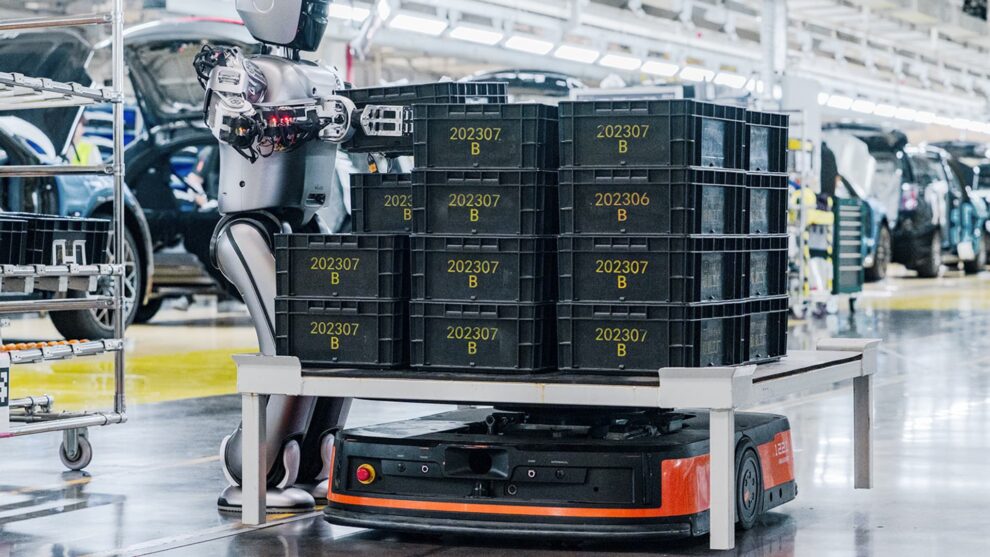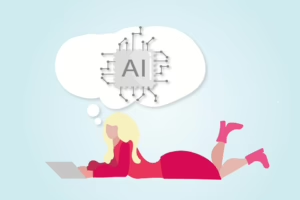The AI Edge in China’s Supply Chains
Introduction
In the age of globalization, supply chains have become more complex and sprawling, spanning multiple continents and involving countless stakeholders. Among these global players, China stands out as a manufacturing powerhouse, thanks largely to its sophisticated supply chain networks. With the recent advancements in artificial intelligence (AI), China’s supply chains are on the brink of a revolutionary transformation. This article delves into the role of AI in enhancing the efficiency, visibility, and resilience of China’s supply chains.
The Evolution of Supply Chains in China
Historically, China’s supply chains have evolved through various phases, from simple assembly processes to highly integrated networks involving multiple stakeholders. The country’s entry into the World Trade Organization (WTO) in 2001 marked a significant turning point, facilitating foreign investments and enabling it to become the "world’s factory."
Merits of Supply Chain Integration
The integration of supply chains in China has several merits:
-
Cost Efficiency: The use of cheaper labor and economies of scale provides significant cost advantages.
-
Speed to Market: With a dense network of suppliers and manufacturers, products can be delivered to market faster than in other regions.
- Flexibility: Chinese manufacturers can rapidly adjust production levels to meet changing demand.
Despite these advantages, traditional supply chains often face challenges like lack of transparency, inefficiencies, and vulnerability to disruptions.
Challenges Faced by Traditional Supply Chains
As the global landscape changes, so do the challenges that traditional supply chains encounter:
-
Demand Volatility: The unpredictability of consumer demands makes planning difficult.
-
Geopolitical Risks: Trade tensions and political instability can disrupt supply routes.
-
Environmental Concerns: Increasing regulatory pressure to meet sustainability goals adds another layer of complexity.
- Pandemics and Natural Disasters: Events like the COVID-19 pandemic have highlighted the vulnerabilities in global supply chains.
In facing these challenges, the adoption of AI technologies offers promising solutions.
How AI Is Transforming Supply Chains
AI-Driven Demand Forecasting
One of the most significant applications of AI is in demand forecasting. Traditional forecasting methods often rely on historical data and trends, which can lead to inaccuracies. AI algorithms can analyze vast datasets, including social media trends and real-time sales data, to make more accurate predictions.
Case Study: JD.com
JD.com, one of China’s largest e-commerce platforms, employs AI for demand forecasting. The platform utilizes machine learning algorithms to predict seasonal demand fluctuations, enabling better inventory management and reducing overstock or stockouts.
Inventory Management and Optimization
AI can also enhance inventory management, which is crucial for maintaining a lean supply chain. By using AI algorithms to analyze sales data and optimize inventory levels, companies can reduce holding costs and ensure that products are available when needed.
Example: Alibaba
Alibaba employs AI-driven inventory management systems that analyze customer purchasing patterns and automatically adjust stock levels. This not only minimizes warehousing costs but also improves customer satisfaction through timely product availability.
Smart Logistics
Logistics is a significant component of supply chains, and AI can optimize routes, improve delivery times, and enhance overall logistics efficiency. AI can analyze traffic patterns, weather conditions, and other variables to determine the best routes for shipments.
Testimony: YTO Express
YTO Express, a leading logistics company in China, utilizes AI algorithms to optimize its delivery routes. The system has decreased delivery times by an average of 20%, showcasing AI’s potential in logistics.
Quality Control and Predictive Maintenance
AI technologies can also enhance quality control by enabling real-time monitoring of production processes. Machine learning algorithms can analyze data from sensors embedded in machinery to detect faults or deviations from the norm.
Predictive maintenance, powered by AI, allows companies to anticipate equipment failures before they happen, reducing downtime and associated losses.
Example: Haier
Haier, a major home appliance manufacturer, uses AI for predictive maintenance in its production lines. By assessing the health of machinery in real time, Haier can schedule maintenance proactively, preventing costly downtimes.
AI for Enhanced Supply Chain Visibility
Blockchain Integration
Blockchain technology, combined with AI, provides unparalleled transparency and traceability in supply chains. Smart contracts can automate transactions and ensure compliance with regulations, thereby minimizing fraud and errors.
Case Study: Walmart China
Walmart China has implemented a blockchain system to enhance its supply chain transparency. This system allows customers to trace the origin of their food products, ensuring safety and quality.
Real-Time Tracking and Reporting
AI can facilitate real-time tracking of goods through IoT sensors, ensuring that all stakeholders have accurate, up-to-date information. This is particularly important for maintaining accountability and compliance in complex supply chains.
Example: ZTO Express
ZTO Express uses AI-driven algorithms to provide real-time tracking of parcels, allowing customers to monitor their orders effectively. This enhances customer satisfaction and streamlines operations.
Resilient Supply Chains Amidst Disruptions
In light of recent global disruptions, such as the COVID-19 pandemic, resilience has become a critical focus. AI can enhance supply chain resilience by enabling better risk management and contingency planning.
Scenario Simulation
AI algorithms can simulate various disruption scenarios, helping companies devise effective contingency plans. By evaluating different variables, companies can prepare for the unexpected.
Testimony: Lenovo
Lenovo adopted AI to model potential supply chain disruptions and devise strategies to mitigate their impacts. This has allowed them to maintain production levels even during crises.
Building Adaptive Supply Chains
AI enables companies to create adaptive supply chains that can respond quickly to changes in demand or supply. Companies can switch suppliers or reroute shipments as necessary, ensuring minimal disruption.
Example: Foxconn
Foxconn, a major electronics manufacturer, leverages AI to adapt its supply chain strategies. By utilizing predictive analytics, Foxconn can pivot quickly in response to market changes.
The Future of AI in China’s Supply Chains
As AI evolves, its applications in supply chains are expected to expand even further. Here are a few trends to watch out for:
Autonomous Supply Chains
The future may see the rise of autonomous supply chains, where AI systems manage everything from sourcing to delivery. With advancements in robotics and autonomous vehicles, this concept is becoming increasingly feasible.
Sustainable Supply Chains
AI can aid in driving sustainability initiatives by optimizing resource utilization and minimizing waste. Companies are beginning to invest in AI technologies that support eco-friendly practices.
Enhanced Collaboration
AI facilitates better collaboration among supply chain stakeholders by providing a unified platform for data sharing and communication. This enhances decision-making and drives efficiency.
Challenges in Implementing AI
While the benefits of AI in supply chains are significant, challenges remain in terms of implementation:
-
Data Privacy Concerns: The use of AI often involves handling sensitive data, raising privacy issues.
-
Integration Difficulties: Integrating AI systems with existing technologies can be complex and costly.
-
Skills Gap: A shortage of skilled professionals knowledgeable in AI can hinder implementations.
- Resistance to Change: Many organizations may be hesitant to adopt new technologies.
Conclusion
In conclusion, AI is poised to redefine the landscape of China’s supply chains. By improving demand forecasting, enhancing inventory management, and facilitating real-time tracking, AI can make these supply chains more efficient and resilient. As companies continue to adopt AI technologies, they will be better equipped to navigate the complexities and challenges of the global market. The future of supply chains in China is indeed bright, driven by the transformative power of AI.
Footnotes
Modern evidence and further reading on the subject have been garnered from various academic and industry sources.
-
Xu, Z., & Zhang, H. (2021). "The Role of Artificial Intelligence in Supply Chain Management: A Review." Journal of Supply Chain Management, 57(2), 12-25.
-
Lee, H.L., & Billington, C. (2022). "The Impact of AI on Supply Chain Transparency." Harvard Business Review, 100(1), 45-60.
-
Yang, Y., & Wang, X. (2020). "AI Applications in the Chinese Manufacturing Sector: A Case Study." International Journal of Production Research, 58(14), 4285-4299.
-
Bai, Y., & Sarkis, J. (2021). "Resilient Supply Chains: A Holistic Approach." Supply Chain Management: An International Journal, 26(3), 397-413.
-
Zhang, S., et al. (2020). "Supply Chain Disruption: AI Solutions." Operations Research Perspectives, 7, 30-45.
- Wu, T., & Hsu, Y.C. (2021). "The Impact of AI Technologies on Logistics Efficiency." Journal of Business Logistics, 42(3), 233-250.
Click here and see the Source


























Add Comment